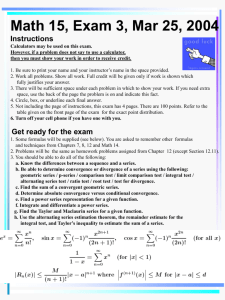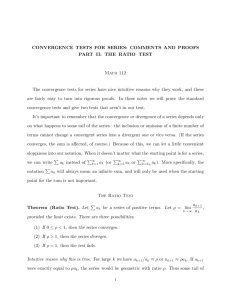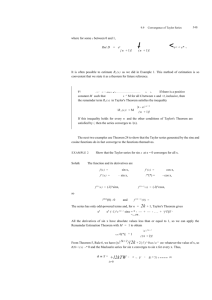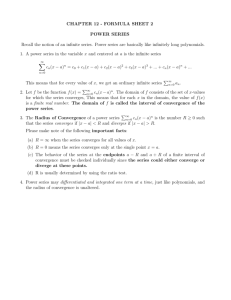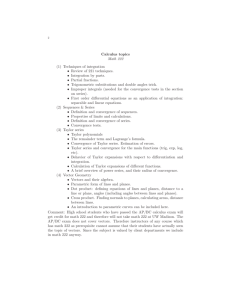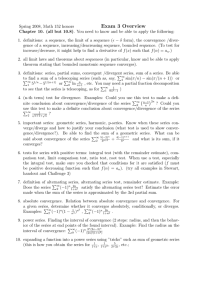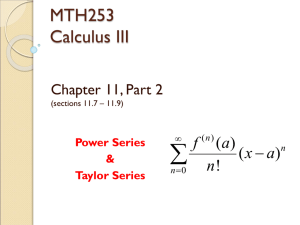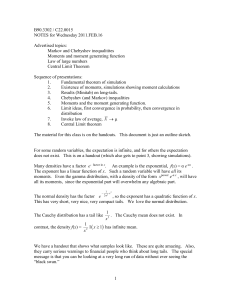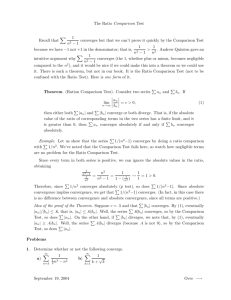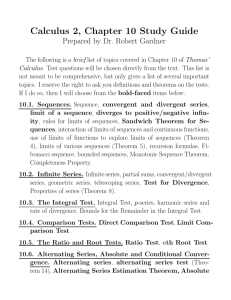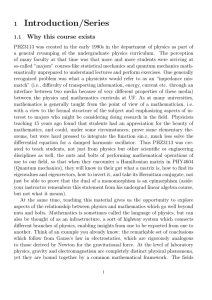Exam 3 Review Sheet
advertisement
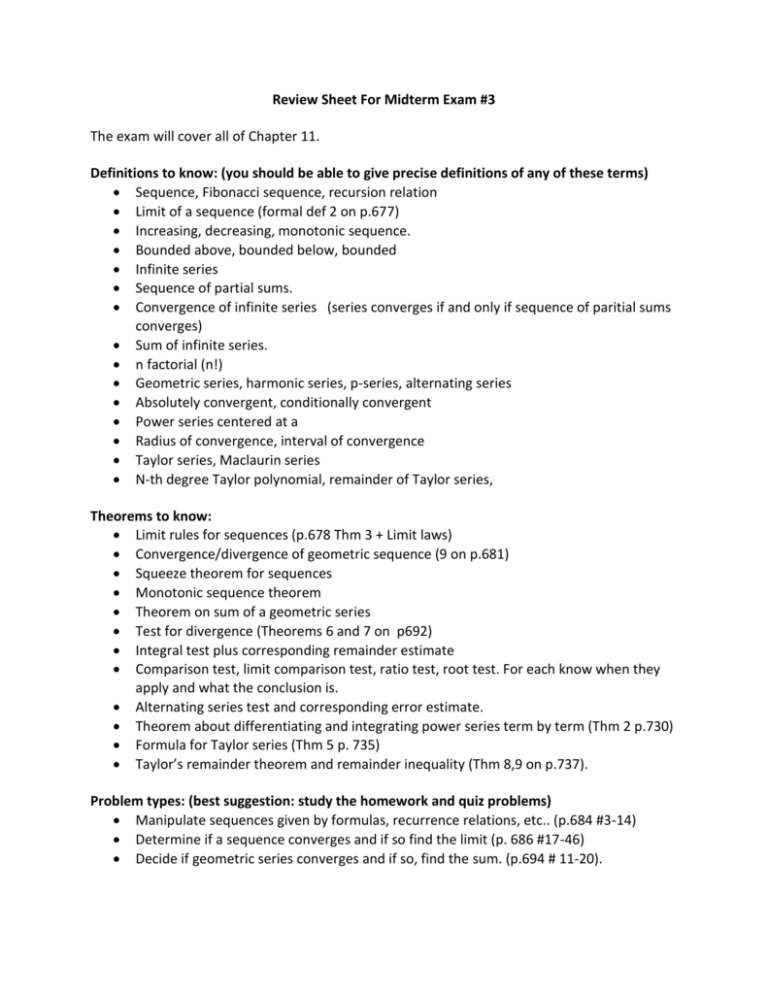
Review Sheet For Midterm Exam #3 The exam will cover all of Chapter 11. Definitions to know: (you should be able to give precise definitions of any of these terms) Sequence, Fibonacci sequence, recursion relation Limit of a sequence (formal def 2 on p.677) Increasing, decreasing, monotonic sequence. Bounded above, bounded below, bounded Infinite series Sequence of partial sums. Convergence of infinite series (series converges if and only if sequence of paritial sums converges) Sum of infinite series. n factorial (n!) Geometric series, harmonic series, p-series, alternating series Absolutely convergent, conditionally convergent Power series centered at a Radius of convergence, interval of convergence Taylor series, Maclaurin series N-th degree Taylor polynomial, remainder of Taylor series, Theorems to know: Limit rules for sequences (p.678 Thm 3 + Limit laws) Convergence/divergence of geometric sequence (9 on p.681) Squeeze theorem for sequences Monotonic sequence theorem Theorem on sum of a geometric series Test for divergence (Theorems 6 and 7 on p692) Integral test plus corresponding remainder estimate Comparison test, limit comparison test, ratio test, root test. For each know when they apply and what the conclusion is. Alternating series test and corresponding error estimate. Theorem about differentiating and integrating power series term by term (Thm 2 p.730) Formula for Taylor series (Thm 5 p. 735) Taylor’s remainder theorem and remainder inequality (Thm 8,9 on p.737). Problem types: (best suggestion: study the homework and quiz problems) Manipulate sequences given by formulas, recurrence relations, etc.. (p.684 #3-14) Determine if a sequence converges and if so find the limit (p. 686 #17-46) Decide if geometric series converges and if so, find the sum. (p.694 # 11-20). Use the various tests to decide if a series converges absolutely, conditionally or diverges. (This is the bulk of sections 11.3-11.6, brought together in section 11.7. You can expect it to make up almost half the points on the test). You should be able to decide which test to use and then apply it to determine convergence of not. Use the error estimates (integral test and alternating series test) to approximate the sum of a series to a desired accuracy. Given a power series, determine the radius of convergence and interval of convergence. (p.727 #3-30) Compute a power series for a function and its radius of convergence, using known power series plus integration, differentiation and substitution. (p. 733 #3-30) Find the Taylor series for a function f(x), using the definition. (p. 746 #5-20). Use series to calculate definite integrals and limits. (p. 747 #51-57) Multiply and divide power series. Compute degree n Taylor polynomials. (Section 11.11).
